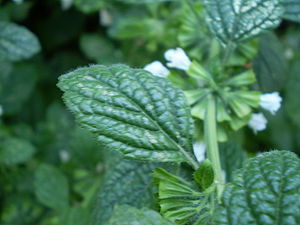Pain in Calf While Jogging
Muscle strain to the calves can occur while engaging in heavy leg use, such as jogging, hiking (especially uphill), cycling, and basketball or other sport that requires frequent running. This is due to damage to the muscle fibers, tendon, fascia (muscle covering) and/or blood vessels.
But before you assume that your calf pain is a muscle strain, know that calf pain can also be caused by a thrombus, or blood clot. This is a medical emergency that demands a visit to your physician and special tests. For more information on blood clotting in the legs (deep vein thrombosis or DVT), read this article.
Strains occur in different grades. The most simple strains and sprains (Grade I) occur when there is mild tearing of some muscle fibers. Grade III sprains and strains involve complete tears to the muscle and/or ligament (the ligaments are on the ends of the muscle and connect it to bone) and joint damage. Grade III sprains and strains are emergency in nature and will most likely require surgery.
If you get leg (lower) cramps when jogging, you’ll probably need to stop or risk getting a “pulled” calf muscle. This can be painful enough to force you to get off your feet and sit on the ground. A pulled calf muscle starts with a twitchy sensation in the calf, followed by an involuntary, painful contraction that forces you to bend your knee for relief. It signifies a strained gastrocnemeus muscle, tendon or fascia and is related to abnormal muscle physiology due to muscle exhaustion.
You see, muscle contraction involves very complex biochemical reactions. Calcium, sodium and potassium ions modulate the actions of actin and myosin, the specialized protein structures that make up skeletal muscle and enable changes in muscle length. Lactic acid builds up as the muscle contracts and relaxes continuously during running. It is flushed out of the area by normal biological pathways but eventually builds up as the activity continues.
If you get calf pain after engaging in heavy leg use, use the PRICE protocol:
- Protect the muscle from further injury
- Rest the muscle
- Ice the muscle for 20 minutes using a frozen gel pack*
- Compress the ice around the muscle (use two long socks or ace wrap)
- Elevate your leg for gravity-assisted swelling reduction
If you keep getting calf pain during heavy physical activity, it could be that your legs need more exercise/ conditioning before attempting to engage in such activities. This is usually the case for those who spend a lot of their time sitting. You can do the following leg exercises at home to strengthen your calves:
1. Lunges. Find a place where you can walk 10 yards doing lunges; switch legs.
2. Squat/knee bend exercises. Even better if you can hold a 10-16 pound medicine ball while doing.
3. While standing (bare feet) go up on the balls of your feet, hold one second and go back down; repeat 20 times and hold the last three (on the balls of your feet) for 20 seconds each.
4. Calf stretch. Stand two feet in front of a wall, put one leg back, bend the other. Keep the bottoms of both feet touching the ground (don’t let your heel come off the floor). Bend your front leg; keep your rear leg straight and keep bending until you can tolerate the maximum stretch to your rear leg. Hold for 10 seconds; release. Repeat five times.
Related articles
- The Top 5 Best Calf Exercises (projectswole.com)
- Study: High heels may alter anatomy of calves (abclocal.go.com)












